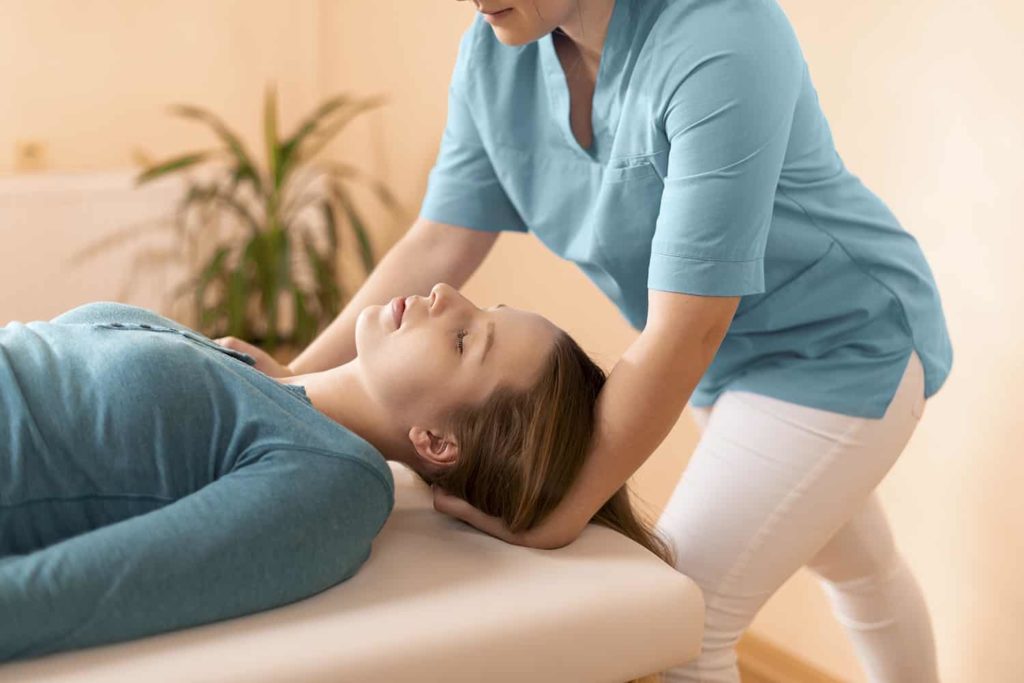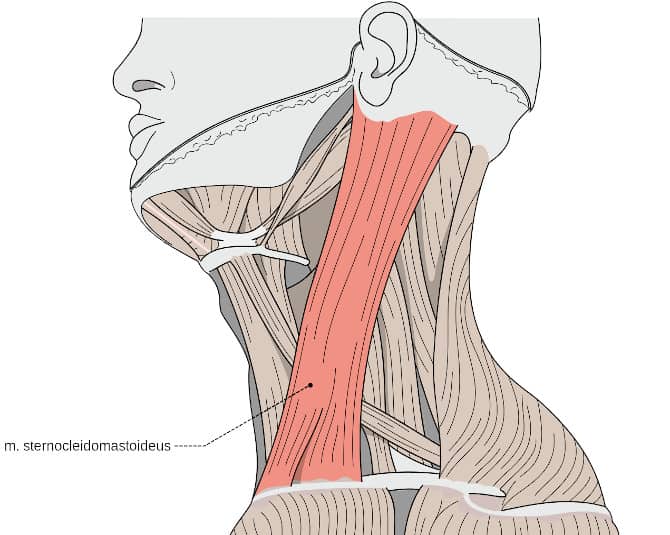Due to the increasingly common office work, many people have problems with the breast-clavicle-milk muscle. This is easy to recognize – it can be seen when we turn our head to the side. Why does it harm him? passive lifestyle? What are the most common disorders of the sternocleidomastoid muscle? Pain in this area can mean several ailments. We decided to explain how to distinguish and treat them.

Sternocleidomastoid muscle
The sternocleidomastoid muscle is the superficial neck muscle that runs from the ear to the collarbone and sternum. It is easy to recognize because it is clearly marked when we turn our head to the side. It is used for this rotation, as well as tilting the head to the side, flexing the cervical spine (from the side and back), and lifting the face upward. It can also support breathing by lifting the sternum.

If we have a painful twisting of the head, the reason is probably sternocleidomastoid muscle.
Sternoclavicular muscle pain -sutkowego
What does sternocleidomastoid pain mean? Usually just muscle overload. We could force them to hold one position for too long (for example, when working with the wrong computer) or change it quickly (which most often happens during accidents, for example, when a car drives into the side of our car). A slight sprain or tear in the muscle should heal quickly.
When we still experience the sternocleidomastoid muscle after a few days, pain can be caused by:
- clavicular-nipple,
- contracture of the sternocleidomastoid muscle,
- torticollis.
In this case, you need to contact a specialist who will diagnose our injury.
Contraction of the sternocleidomastoid muscle
This injury involves the shortening of the muscle, preventing it from returning to its natural length and position. This, however, leads to incorrect positioning of the whole body. Breast-clavicular breast contracture affects people who spend hours with their heads tilted or tilted, for example, using a large number of mobile phones, working at a computer, drivers or some factory workers.
This manifests itself among others:
- headache or heaviness
- tinnitus,
- back pain cervical, lumbar, shoulder and cervical
- protruding head or so-called widow’s hump,
- discopathy,
- problems with head torsion.
Inflammation of the sternoclavicular mastitis
Condition Inflammation of this muscle (including the attachment of the sternocleidomastoid muscle) is usually caused by trauma — tissue rupture or contusion. Its main symptoms are:
- significant pain in the sternocleidomastoid muscle,
- limited range of head movement, especially lateral torsion
- swelling at the site of injury.
They increase with the development of acute inflammation of the sternocleidomastoid muscle, but weaken when the inflammation becomes chronic. Untreated illness can lead to more serious illness, including muscle fibrosis or torticollis.
Torticollis
This condition means that it forces the head into position. Lateral turn, often with a slight elevation of the face. Torticollis can be congenital or acquired, but here we focus on the latter. Causes of this disease include neck injuries, inflammatory changes (including thoracic-clavicular mastitis), paresis of the neck muscles, compensation for visual or hearing impairment, and abnormal habits. A specific acquired form is spastic torticollis, the sources of which are unknown (sometimes it can be an element of dystonia, Wilson’s disease or Minor’s disease).
In addition to the characteristic position of the head, torticollis can manifest itself: limited range of head movements,
- headache,
- neck pain and stiffness
- edema.
Treatment of the sternocleidomastoid muscle
At this particular location, physiotherapy has a limited capacity for action. Therapy usually focuses on relaxing and stretching the muscles through massage and exercise. Neck trigger points also develop, which are mainly located in the sternocleidomastoid muscle. However, caution is advised here due to the proximity of the trachea, large blood vessels and nerves.
Finding and fixing the root cause of the problem is very important for the treatment to be effective. Correcting poor posture or regularly using relaxation techniques when stress aggravates the problem, it is imperative that the trauma does not recur. Stretching your sternum, collarbone, and breast is also a good idea to prevent injury.
